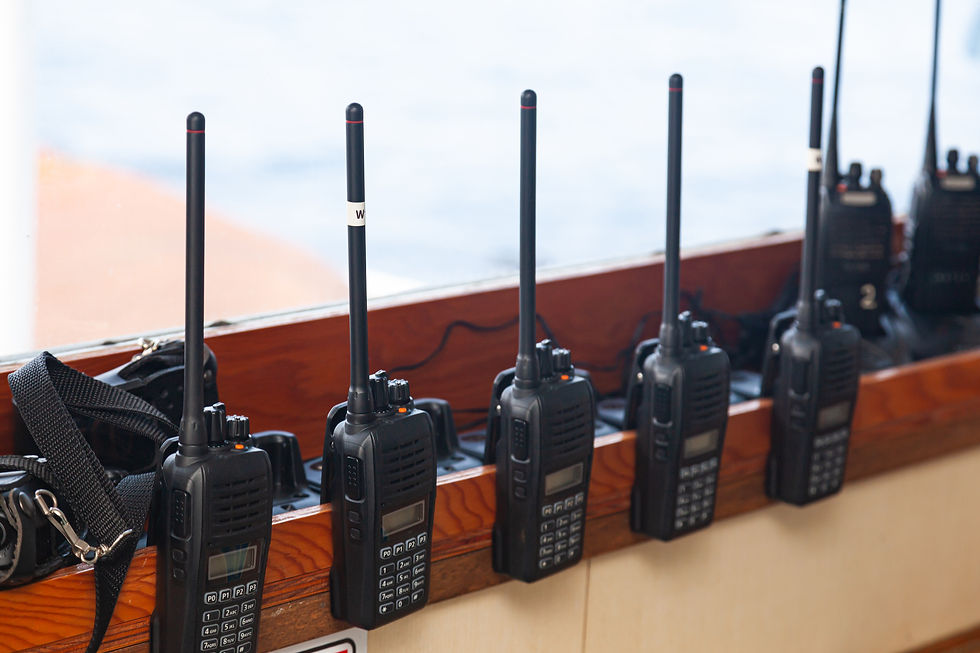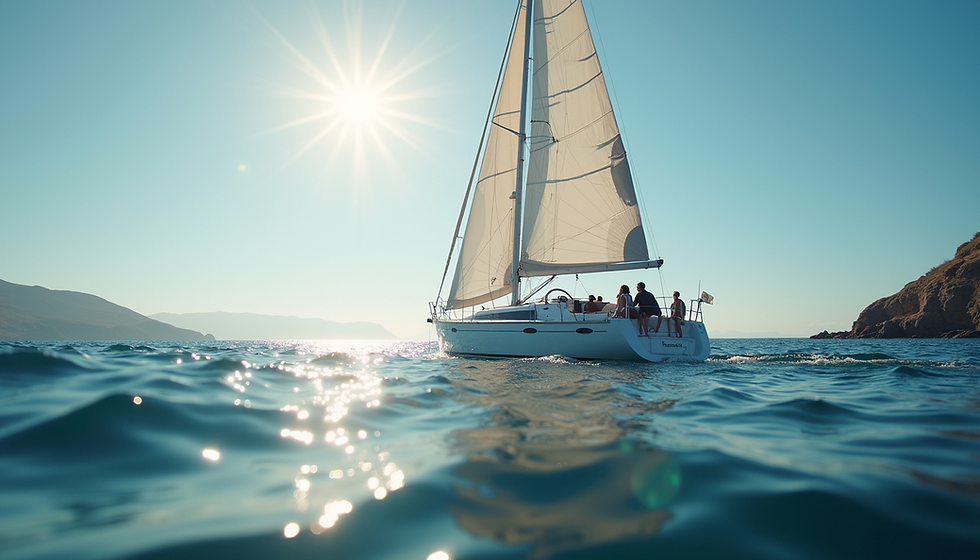Understanding the Importance of VHF Radios at Sea
- Paul Bew City Sailing

- Aug 28
- 4 min read
When you're out at sea, communication is key. One of the most vital tools for achieving this is the Very High Frequency (VHF) radio. Understanding the importance of VHF radios can make a significant difference in safety and operational effectiveness while navigating the waters. In this blog post, we will explore various aspects of VHF radios, including their functions, importance, best practices, and much more.
What is a VHF Radio?
VHF radios are communication devices specifically designed for marine environments. They operate on frequencies between 156 and 174 MHz, making them suitable for ship-to-ship and ship-to-shore communication. They are essential for a number of reasons:
Safety Communication: VHF radios allow boaters to communicate directly with the Coast Guard and other vessels in case of emergencies.
Weather Updates: Many VHF radios come equipped with weather channels that provide real-time updates, helping sailors make informed decisions.
Distress Signals: VHF radios allow users to send out distress signals, such as the MAYDAY call, in situations where immediate help is needed.
VHF radios are designed to withstand harsh marine conditions. They are waterproof, have excellent sound clarity, and often come with additional safety features that make them indispensable when you're out at sea.

The Role of VHF Radios in Marine Safety
The most significant role of VHF radios is enhancing marine safety. Many sailors rely on them for everything from routine communications to life-saving operations. According to the Coast Guard, most marine accidents occurring at sea can be significantly mitigated with effective communication. Here's how VHF radios contribute to marine safety:
Emergency Response: In emergencies, being able to contact the Coast Guard can be lifesaving. In 2020, over 10,000 search and rescue missions were conducted by the Coast Guard, many initiated by VHF radio calls.
Navigational Safety: While at sea, knowing the positions of other vessels nearby can help prevent collisions. The VHF radio enables close-quarters communication and helps maintain distance from other boats.
Weather Alerts: Newer VHF radios directly access weather information, providing boaters with updates about navigation warnings, storm alerts or other dangerous conditions.
Implementing the use of VHF radios can not only safeguard your journey but also provide peace of mind during your maritime adventures.
The whole of the RYA GMDSS VHF Course explained on You Tube by Paul of city Sailing.
Best Practices for Using VHF Radios
To get the most out of your VHF radio while ensuring safety and compliance with regulations, here are some best practices to consider:
Know Your Equipment: Familiarise yourself with the features and functions of your VHF radio before heading out to sea. Like other electronic devices, knowing how to navigate your radio can save time in an emergency.
Use Proper Protocol: There are established protocols for communication on VHF channels. Always identify yourself and your vessel before making a call. Using the correct format can help streamline communication in emergencies.
Regularly Test Your Equipment: Perform routine checks and tests of your radio before leaving the dock. Ensure that your radio and its battery are fully functional.
Stay On the Right Channel: Different channels serve different purposes. For example, Channel 16 is for emergencies, while there are specific channels for marina and port communications or weather updates. Knowing which channel to use can save precious time while out at sea.
Understanding these best practices can significantly enhance your communication efficiency and safety while navigating the waters.
Paul from City Sailing explains how to conduct a VHF Mayday Distress Call.
Training and Certification for VHF Radio Use
With the critical importance of VHF radios for safety and effective communication, it's essential to understand how to use them properly. One of the best ways to do this is through formal training. A marine vhf radio course enhances your knowledge of radio operations, best practices, and emergency procedures. Such training typically covers:
Basic Functions of VHF Radios: Understanding how the system works, including how to tune into channels and send distress signals.
Emergency Protocols: Learning the correct way to communicate in emergencies can make the difference between life and death.
Advanced Techniques: Gaining insights into managing multiple communications and navigating through various marine environments.
You can find structured training programs through at City Sailing both online and in the classroom.
Final Thoughts on VHF Radios
In conclusion, understanding the importance of VHF radios can not only enhance your safety but also enrich your overall sailing experience. From facilitating communication during emergencies to providing weather updates, these devices serve crucial roles on the water. By familiarizing yourself with best practices, legal regulations, and training requirements, you can ensure a seamless and safe sailing adventure.
Whether you are a seasoned boater or a novice sailor, investing in a quality VHF radio and proper training is invaluable. Remember to keep your radio well-maintained and regularly check its functionality. With your VHF radio at the ready, you can focus more on enjoying the beauty of the sea while remaining safe and connected.




Comments